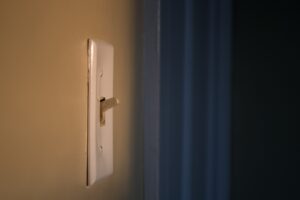Stop Worrying About Turning Off Your Lights
Posted by Emma Reid on 26th Oct 2022

‘Who left these lights on?’ was probably the source of a lot of arguments in your home when you were younger, but LEDs can put an end to this argument for good. Here’s how.
Filament bulbs are expensive to run and don’t last very long (the sturdiest incandescent bulbs would only last for around 750 hours, which is about 2 months of typical use), which meant your parents were absolutely right to nag you about turning them off!
If you’re using LED bulbs, however, these problems are moot. Their incredible lifespans mean they can last for years even if they’re used carelessly, and their energy efficiency means they don’t take up a lot of power. Let’s take a look at how much it actually costs you to run an LED light.
How Much Does It Cost To Run An LED?
You can calculate how much your bulb will cost to run very easily. You just need the wattage of your bulb, the average length of time you’ll use that bulb for and the cost of electricity per kilowatt hour (or kWh). At time of writing, that’s 34p/kWh
Let’s take a 5W LED bulb that you use for an hour a day as an example. You’ll need to divide that wattage by 1000 to get the kilowatts used.
(Wattage/1000) x hours x kWh cost = cost in pence
(5/1000) x 1 x 34 = 0.17p
Thus, it costs you just a fraction of a penny to run an LED bulb for an hour- even in the midst of these energy bill spikes. Under more typical circumstances, they cost even less to run.
For a completely full picture, let’s take a 50W halogen bulb, which will produce a similar number of lumens as a 5W LED. This would cost you 1.7p to run for an hour.
This continues even if you have large light fittings with multiple bulbs. A standard 5-way light that uses the above 5W LED will still only cost you 0.85p to run. That’s less than a penny. The 50w halogens would cost you 8.5p an hour.
Where Should Your Focus Be Instead?
Obviously, it’s smart to turn off lights when you’re not using them, but they shouldn’t be a major source of stress for you, nor should you feel like you have to sit in the dark. There are other, more impactful ways to reduce your energy usage.
For example, avoiding overfilling your kettle could save you £43 a year, while taking four-minute showers could save you as much as £95 a year. This would more than cover you getting to stay in a well-lit home.
With this in mind, you can see just how much value for money an LED bulb can offer up! If you’ve got any more questions, then don’t hesitate to get in touch with us on 0116 321 4120 or send an email to cs@wled.co.uk.
You can also follow us on YouTube, Twitter, Instagram or Facebook.





